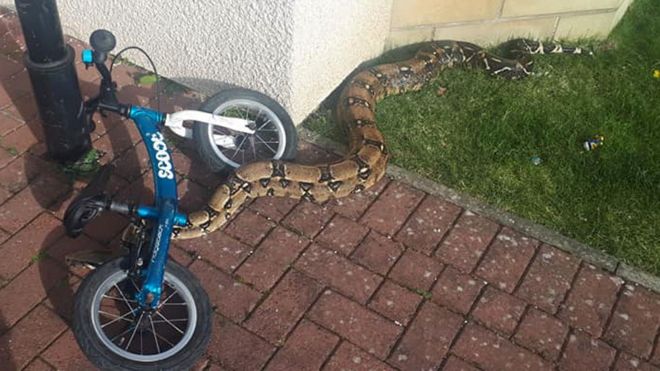UGA Press
Release by Michael Terrazas 4/3/19
A group
of University of Georgia researchers led by geneticist Douglas Menke has become
the first in the world to successfully produce a genetically modified
reptile—specifically, four albino lizards—using the CRISPR-Cas9 gene-editing
tool. The team’s results, which appeared online March 31, have been submitted
for peer review.
“Reptiles
are very understudied in terms of their reproductive biology and embryonic
development,” said Menke, associate professor in the department of genetics. “There
are no good methods to manipulate embryos like we can easily do with mammals,
fish or amphibians. To our knowledge, no other lab in the world has produced a
genetically altered reptile.”
Gene
manipulation using CRISPR
typically involves injecting gene-editing solutions into an animal’s newly
fertilized egg or single-cell embryo, causing a mutation in the DNA that is
reproduced in all subsequent cells. However female reptiles can store sperm in
their oviducts for long periods, making it difficult to pinpoint the exact
moment of fertilization. Also, the physiology of their fertilized eggs, which
have pliable shells with no air space inside, presents challenges for
manipulating embryos without damaging them.
Working
with the species Anolis sagrei, commonly called the brown anole, Menke’s team
overcame these challenges by microinjecting CRISPR proteins into multiple
immature eggs, or oocytes, still located in the lizards’ ovaries. Targeting the
tyrosinase gene, they successfully injected 146 oocytes from 21 lizards, then
waited for the oocytes to be fertilized naturally. Within a few weeks, they
realized their goal: four offspring displaying the telltale trait of albinism,
which results when tyrosinase is inactivated.
“When I
saw our first albino hatchling, it was truly awe inspiring,” said D.V.M./Ph.D.
student Ashley Rasys, who was first author on the study. “I’m most excited
about the possibility of expanding this approach into many other reptilian
model systems, effectively opening the doorway for future functional studies.”
Menke,
who typically studies mice, said he chose brown anoles because they essentially
represent a reptilian counterpart to Darwin’s famous Galapagos finches—the
lizards are spread throughout the islands of the Caribbean, with distinctive
traits arising among each island’s relatively isolated population. Leg size,
for example, is highly variable among different species of anoles, with
ground-dwelling species possessing big and strong legs adapted to running and leaping,
while their tree-dwelling cousins have smaller legs that are more agile for
limb-hopping. The lizards for this study were all collected from the wild in an
area near Orlando, Florida.
The
ability to study the genes of brown anoles could also have implications for
human genetics work. The tyrosinase gene is required for certain aspects of eye
development shared between humans and anoles, but absent in the eyes of mice
and other organisms commonly used for biomedical research. Researchers looking
to explore ways to manipulate this gene for human ocular health did not have a
suitable animal model—until now.
As an
added bonus, Menke’s team noted that the mutant anoles not only displayed the
manipulated tyrosinase in the gene copies inherited from their mother, but from
the father as well. This means that the CRISPR reagent likely remained active
in the mother’s oocytes much longer than anticipated and mutated the paternal
genes post-fertilization.
“That was
a surprise,” Menke said. “It enabled us to see the functional requirements of
the gene without having to breed mutated animals to produce offspring who
inherit the mutated gene from both parents. It’s a big time-saver.”
“This
work could have far-reaching impact not only for the study of reptile
genetics but also for the advancement of genomic medicine and
application in humans,” said David Lee, UGA vice president for research. “I
applaud Dr. Menke and his colleagues on this very significant
achievement.”
Additional
co-authors on the study include James Lauderdale, associate professor in the
department of cellular biology; research staff members Sungdae Park and Rebecca
Ball; and graduate student Aaron Alcala. The research was primarily supported
by grants from the National Science Foundation’s Enabling Discovery through
GEnomic Tools (EDGE) program and from the Society for Developmental Biology.

 Image copyrightBRUCE BAKER
Image copyrightBRUCE BAKER






